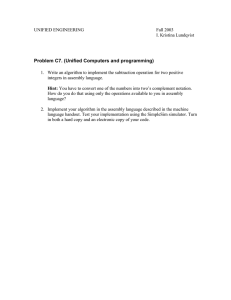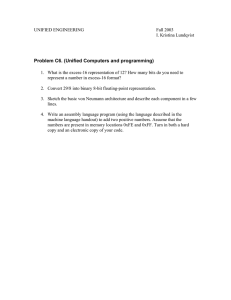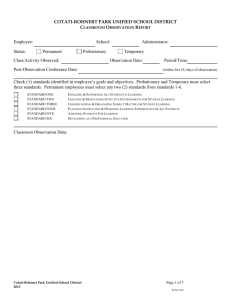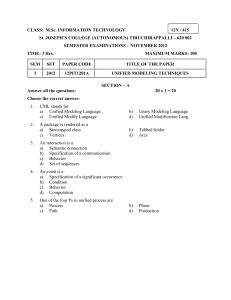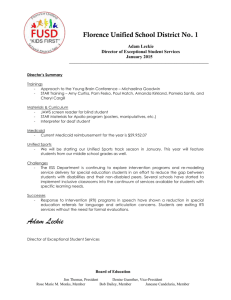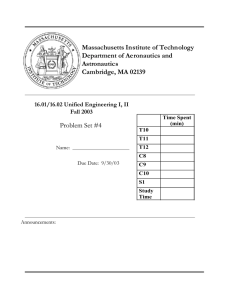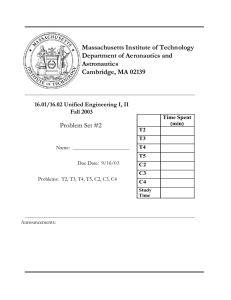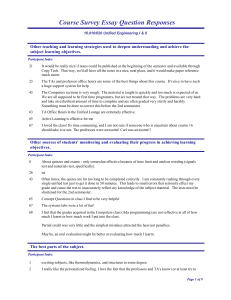Document 13468428
advertisement
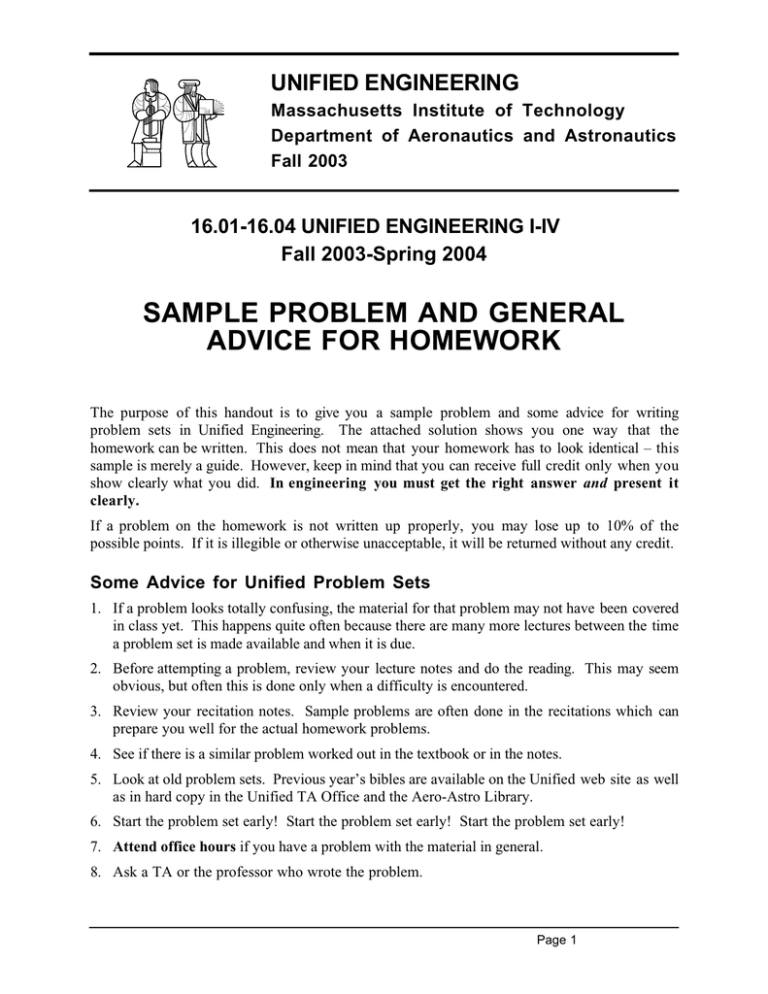
UNIFIED ENGINEERING Massachusetts Institute of Technology Department of Aeronautics and Astronautics Fall 2003 16.01-16.04 UNIFIED ENGINEERING I-IV Fall 2003-Spring 2004 SAMPLE PROBLEM AND GENERAL ADVICE FOR HOMEWORK The purpose of this handout is to give you a sample problem and some advice for writing problem sets in Unified Engineering. The attached solution shows you one way that the homework can be written. This does not mean that your homework has to look identical – this sample is merely a guide. However, keep in mind that you can receive full credit only when you show clearly what you did. In engineering you must get the right answer and present it clearly. If a problem on the homework is not written up properly, you may lose up to 10% of the possible points. If it is illegible or otherwise unacceptable, it will be returned without any credit. Some Advice for Unified Problem Sets 1. If a problem looks totally confusing, the material for that problem may not have been covered in class yet. This happens quite often because there are many more lectures between the time a problem set is made available and when it is due. 2. Before attempting a problem, review your lecture notes and do the reading. This may seem obvious, but often this is done only when a difficulty is encountered. 3. Review your recitation notes. Sample problems are often done in the recitations which can prepare you well for the actual homework problems. 4. See if there is a similar problem worked out in the textbook or in the notes. 5. Look at old problem sets. Previous year’s bibles are available on the Unified web site as well as in hard copy in the Unified TA Office and the Aero-Astro Library. 6. Start the problem set early! Start the problem set early! Start the problem set early! 7. Attend office hours if you have a problem with the material in general. 8. Ask a TA or the professor who wrote the problem. Page 1 Unified Engineering Course Facts 9. Contact your classmates and discuss the problem with them. 10. Make a clear sketch. A well drawn figure can save a tremendous amount of time. 11. Work carefully through the problem. It is better to work slowly but get the right answer than to work faster and make unnecessary (“stupid”) mistakes. 12. To avoid a round-off error, do not round numbers too early in the calculations. 13. Use a reasonable number of significant digits in your answer. More digits does not make it more accurate. 14. Box your final answers clearly and check them. Do they make sense? A simple dimensional analysis can catch a big mistake. Question numeric answers. If you get Mach 3.4 as the speed of a glider, you know something is wrong. 15. Make sure that all answers to a problem are consistent. For example, percentages should add up to 100% and so on. 16. If you made a mistake at the end, don’t erase what you did before or rewrite everything. Just mark what you found to be wrong and restart at the end. This shows the grader that you checked what you had done. 17. Present the answer in the form asked for. For example, if a velocity (which has magnitude and direction) is asked for, do not just give the speed (the magnitude of the velocity). 18. Write down clearly and unambiguously with whom you worked on the problem. If you fail to do so, you will lose points. See the Course Facts handout under “Academic Honesty” for details. SAMPLE PROBLEM: Problem 1.1A (Dynamics) A rocket is projected vertically upward and achieves a burnout at time equal to zero. It reaches a height above burnout equal to h at time t1 going up and t2 coming down. Find h and the speed v0 at burnout. Neglect the air drag. Page 2
